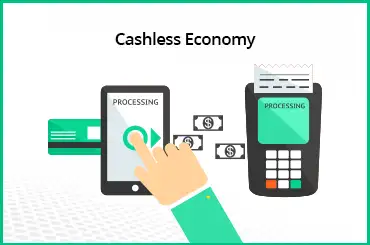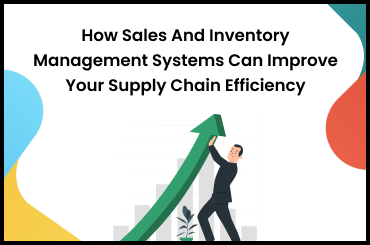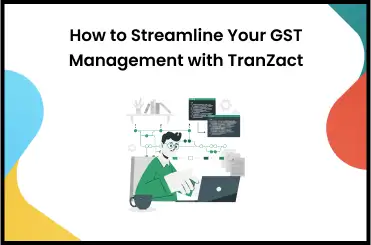In any business, bills of supply and tax invoices are two important documents. These documents contain valuable data and analyses that affect how businesses operate. They indicate the assets you own. Therefore, learning about these two documents’ importance and tax regulations can help improve communication between businesses and tax authorities.
In this article, we'll understand the difference between tax invoice and bill of supply to help you better understand their roles and purposes.
Tax Invoice
A tax invoice, like any standard business invoice, helps to record and describe a transaction between a seller and a buyer. The mention of the applicable tax amount in this document makes it different, making it a key financial document. Businesses must issue tax invoices to show that they can legally impose taxes on their customers.
Tax Invoices under GST
In the Goods and Services Tax (GST) system, a Tax Invoice is a key document issued by a registered supplier to a customer to supply goods or services. This invoice acts as a legal record of the transaction and is an important part of the GST reporting process.
A valid Tax Invoice typically includes specific details such as:
- the supplier's and recipient's GSTIN (Goods and Services Tax Identification Number),
- a unique invoice number,
- the date of issue,
- a description of the goods or services,
- their quantity,
- value, and
- applicable GST rates.
Read Also: Inventory Accounting: Definition, How It Works, Advantages
Mandatory Fields of a GST Invoice
A GST tax invoice is an invoice delivered by a seller to a customer that includes all facts relating to the items sold, services performed, and the amount of taxes due. This type of invoice is used when the seller is registered for products and Services Tax (GST) and must charge GST on the products and services provided. A GST invoice is essential in collecting taxes and transferring input tax credits. A GST invoice must have particular required fields to ensure its validity:
-
Invoice number and date.
-
The customer's name.
-
The shipping and billing addresses.
-
The GSTIN of the customer and taxpayer.
-
The source of supply.
-
HSN/SAC code.
-
Item data include descriptions, quantities (numerical), units (e.g., meters, kilograms), and total value.
-
Taxable value and any relevant discounts.
-
Indicate whether GST is due by reverse charge.
-
The supplier's signature, which validates the invoice's legitimacy.
Bill of Supply
A bill of supply is a document provided to consumers by GST-registered firms showing that no GST is charged on the products or services in the transaction. It does not include the GST rate, unlike a tax invoice, because some businesses are not permitted to collect GST. When GST does not apply or cannot be reclaimed from the customer, this document works as an alternative to a regular tax invoice.
Read Also: What Is CNC Machining? An Overview Of The CNC Machining Process
Mandatory Fields of a Bill of Supply
A Bill of Supply must include the following information under GST regulations:
-
The name, address, and GSTIN of the supplier.
-
A distinct and sequential Bill of Supply number for each fiscal year.
-
The recipient's name, address, and GSTIN if they are registered.
-
An HSN Code for the items or an Accounting Code for the services offered in the transaction.
Difference Between a Tax Invoice And a Bill Of Supply
The legal and financial duties that make up a business, the Tax Invoice and the Bill of Supply, have different objectives despite their obvious similarities. The difference between tax invoice and bill of supply under GST lies in the way the billing is done for goods and services. The major differences between a tax invoice and a bill of supply are listed below:
| Criteria | Tax Invoice | Bill of Supply |
|---|---|---|
| Purpose | Used for all taxable sales, local and central. | Used for non-taxable sales and by composition dealers. |
| Recipient | Typically issued to the end customer. | Issued to businesses for resale or manufacturing. |
| Tax Amount | Includes separate CGST, SGST, or IGST components. | Does not include any tax details on the bill. |
| Buyer's GSTIN | Must include the buyer's GSTIN if available. | No requirement to include the buyer's GSTIN. |
| Seller's GSTIN | Must include the seller's GSTIN. | It is not a requirement to display the seller's GSTIN. |
| Additional Details | Requires specific details for tax calculation. | No tax-related details are present on the Bill of Supply. |
| Unregistered Buyer | Requires buyer's name, address, state, and place of delivery if invoice value before taxes exceeds a certain threshold. | No such requirement for a Bill of Supply. |
| Tax Calculation | Essential for tracking and calculating taxes. | Not intended for tax calculation but for tax-free sales. |
Simplify the Process of Making Tax Invoice and Bill of Supply With TranZact
Understanding the small differences between tax invoice vs. bill of supply is very important for financial transactions and tax management in the business and taxation world. These similar feeling documents perform different functions and are, hence, extremely valuable for the complicated day-to-day financial activities a business performs.
Financial and tax documents serve an important role in making sure that businesses follow the ever-changing requirements of the financial sector. TranZact helps you to deal with the tax invoicing and billing processes, as well as any other financial element, with ease by offering tools to create GST billing and invoice software.
FAQs on the Difference Between Tax Invoice and Bill of Supply
Q1. Explain the tax invoice and bill of supply difference.
A tax invoice is used for taxable supplies where GST (Goods and Services Tax) or VAT (Value Added Tax) is charged. A bill of supply is used for non-taxable sales or under the Composition Scheme when no GST or VAT is paid.
Q2. When should a tax invoice be used?
A tax invoice should be used when a supplier sells taxable products or services and must charge GST or VAT, he or she will issue a tax invoice. This applies to all normal taxpayers.
Q3. Is it possible for a registered supplier to produce both tax invoices and bills of supply?
Yes, depending on the nature of the goods or services supplied, a registered supplier may issue tax invoices for taxable transactions and bills of supply for non-taxable or Composition Scheme transactions.
Q4. Issuing tax invoices and bills of supply subject to any legal obligations?
Yes, tax authorities have legal criteria and formats for both tax invoices and bills of supply. It is critical to follow these guidelines to stay in line with tax rules.
Q5. What are the risks of issuing incorrect documents, such as a tax invoice instead of a bill of supply, or vice versa?
Issuing incorrect documentation can result in tax reporting concerns. For example, if a taxable supply is invoiced improperly as a bill of supply, the supplier may be held accountable for unpaid taxes, and the recipient may be unable to claim input tax credit.
On the other hand, issuing a tax invoice for non-taxable goods or services may result in the recipient incurring undue tax responsibility. It is important to use the correct document based on the nature of the transaction.
Q6. What are the key components of a Tax Invoice?
A Tax Invoice should include details such as the supplier's and recipient's GSTIN, a consecutive serial number, date of issuance, a description of the goods or services, quantity, value, GST rates, and the total amount.
















